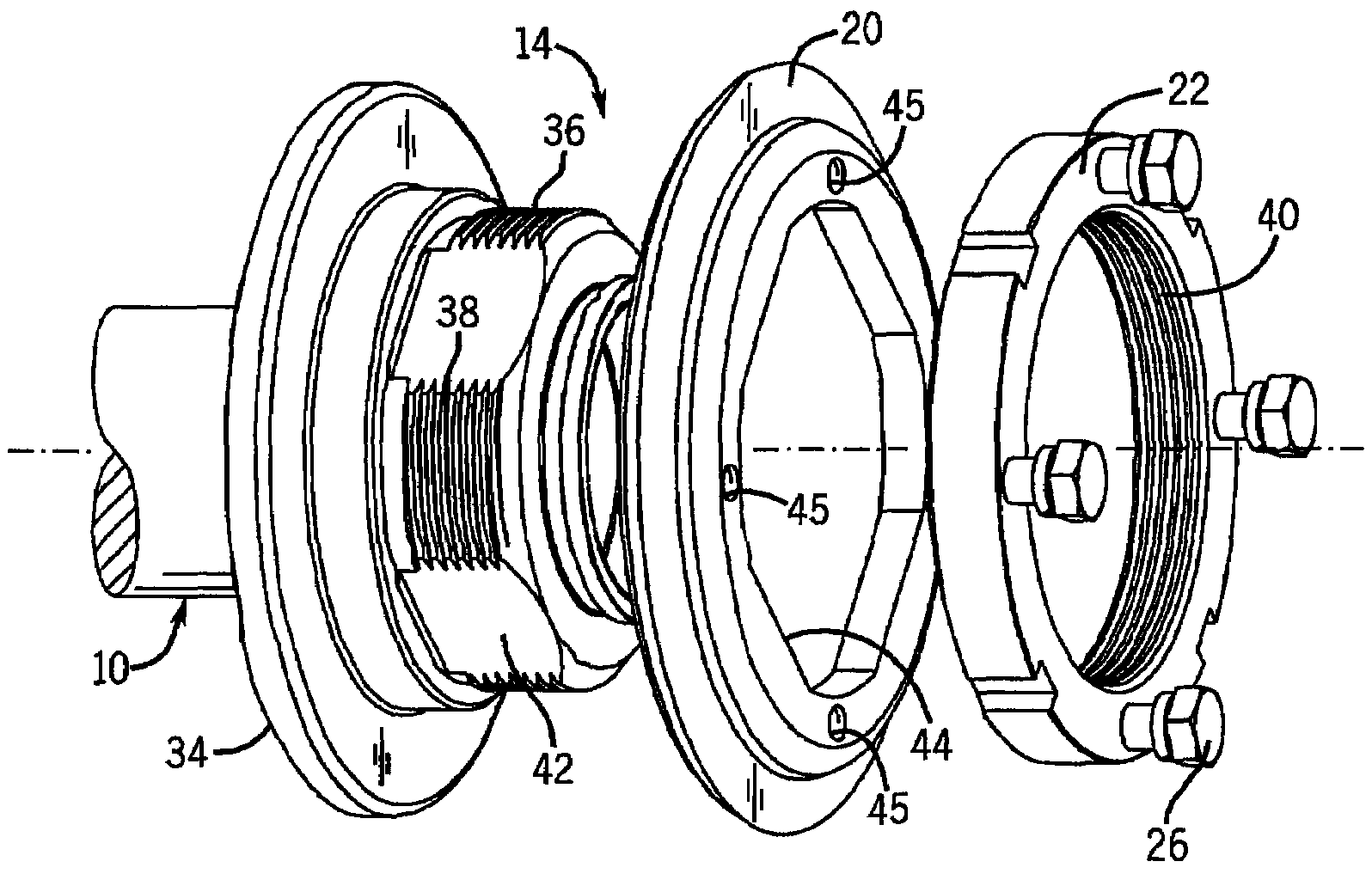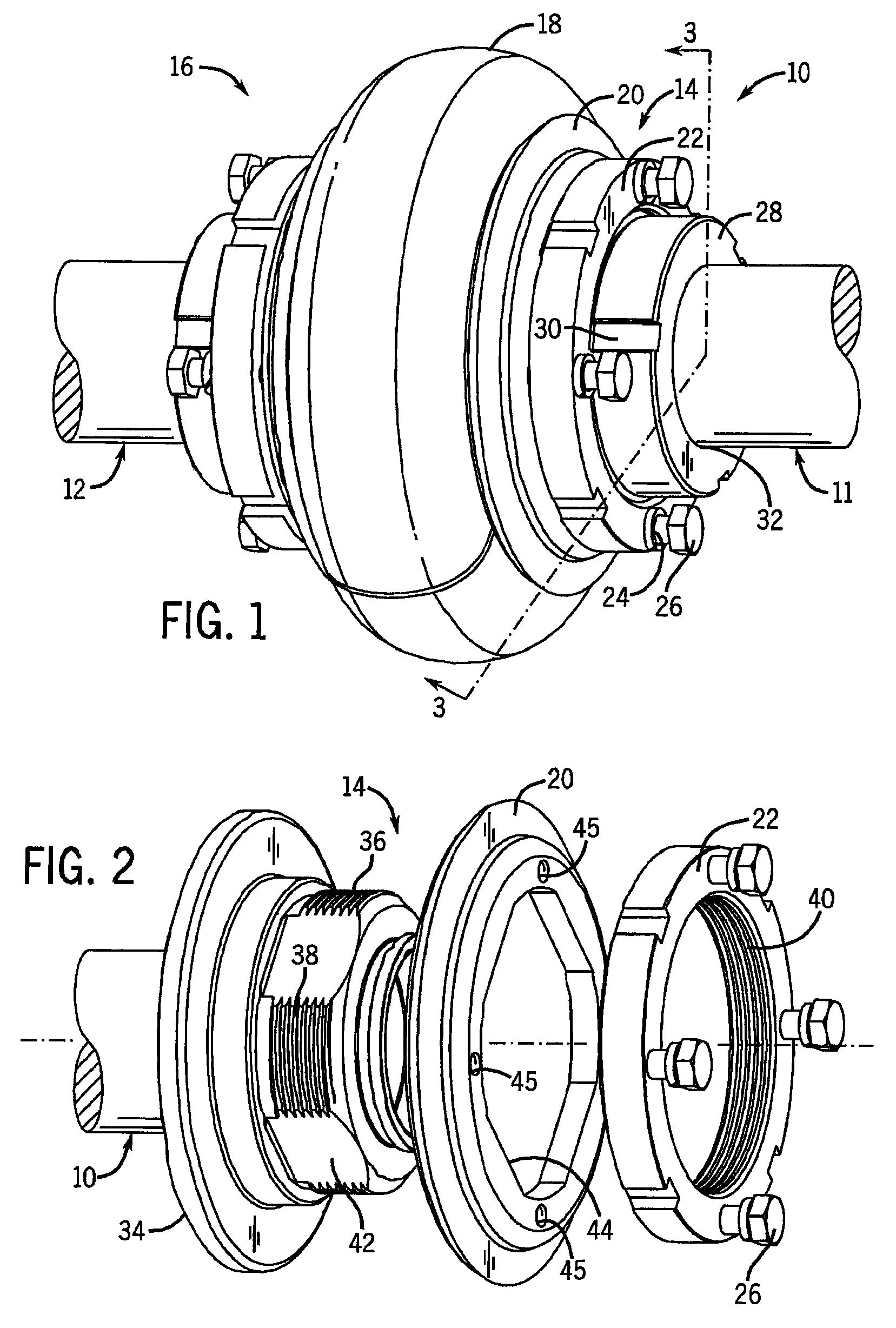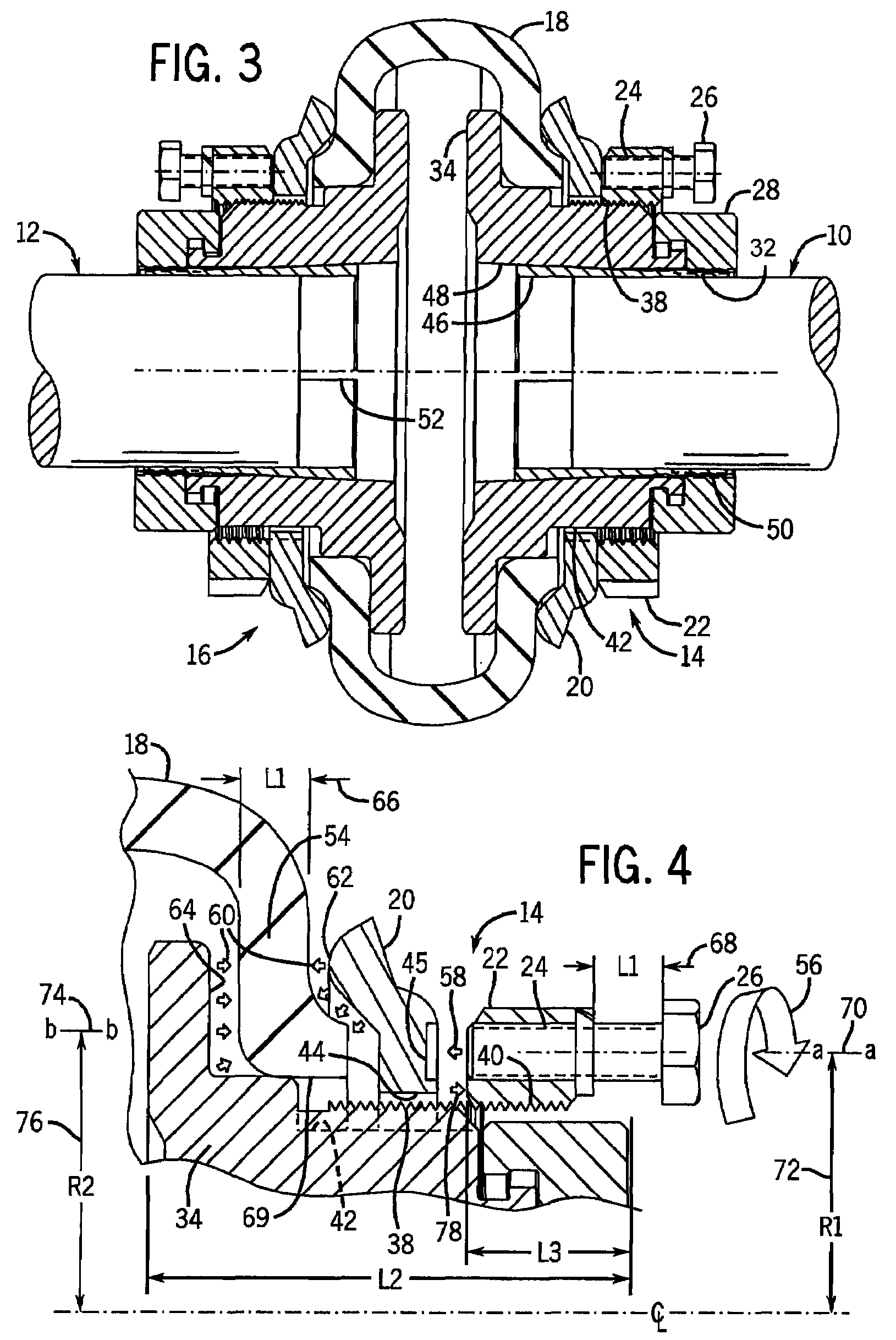Flexible shaft coupling system with antirotational features
a flexible shaft and coupling technology, applied in the field of mechanical couplings, can solve the problems of affecting the implementation and performance of the coupling, the existing coupling, and the difficulty of installation and implementation, and achieve the effects of reducing the required assembly dead space, facilitating installation, and minimizing the radial profile of the coupling system
- Summary
- Abstract
- Description
- Claims
- Application Information
AI Technical Summary
Benefits of technology
Problems solved by technology
Method used
Image
Examples
Embodiment Construction
[0020]Turning now to the drawings, FIG. 1 illustrates a first rotating shaft 10 coupled to a second rotating shaft 12 via a flexible shaft coupling system. The system comprises a first hub assembly 14 coupled to a second hub assembly 16 via a flexible element 18. The hub assemblies may be mirror images of one another, as in the illustrated embodiment, although this need not be the case, and different hubs may be used to accommodate differently sized shafts.
[0021]As shown for the hub on the right side of the system illustrated in FIG. 1, the flexible element 18 is coupled to the hub assembly via a flange 20 and adjusting nut 22. The flexible element is made from a compliant elastomeric material such as a reinforced natural rubber or neoprene. Those skilled in the art will readily appreciate that the invention is not functionally limited to these specific material choices and any suitable compliant material could be used for the flexible element. The compliant nature of the flexible e...
PUM
 Login to View More
Login to View More Abstract
Description
Claims
Application Information
 Login to View More
Login to View More - R&D
- Intellectual Property
- Life Sciences
- Materials
- Tech Scout
- Unparalleled Data Quality
- Higher Quality Content
- 60% Fewer Hallucinations
Browse by: Latest US Patents, China's latest patents, Technical Efficacy Thesaurus, Application Domain, Technology Topic, Popular Technical Reports.
© 2025 PatSnap. All rights reserved.Legal|Privacy policy|Modern Slavery Act Transparency Statement|Sitemap|About US| Contact US: help@patsnap.com



